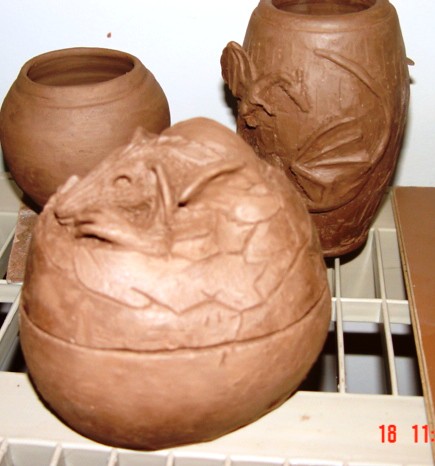Bubbles drew too much power on our garage GFI circuit (needed 18 amps), had kept trippling th e breaker. Julie ran an extension cord from the laundry room, through the door to the garage, and to the kiln. Bubbles never got to cone six. We fired her for almost a day. We were afraid to let her fire for another night, especially with an extension cord going through the door. The next day, we found that the glazes had partially melted, and the cone had just started to bend.
The glazes didn't do what they were supposed to. The clear looked like the icing on a glazed donut, and the matte clear had a really rough surface.
We fired Figaro, the mid-sized electric kiln, to cone six the same day we opened Bubbles. The floating blue turned out such a dark blue that it was almost black. I'll post some pictures of the finished pieces.
I started to read my glaze book, from cover to cover, at this point.
About a week ago, I had half of the nail on my right big toe removed. It hurt, and I've been hobbling around.
Julie has made some more wonderful dragon pieces. Again, I need to post pictures.
I threw two Cassius Basaltic vases for Julie tonight. I was cleaning up my tools to change clays, when Steph entered the studio, and we started talking pottery. I demonstrated the difference between bisqueware and vitrified high fired pieces by teaching her the tongue test. We chatted for a while, then I had to bring her upstairs to go to bed.
Julie has suggested that, since Bubbles takes too long to fire to cone six, and Figaro fires so quickly, that maybe we could convert Bubbles into a raku kiln. We would need to buy a
raku burner, and then modify Bubbles by cutting a few holes, and building a fire box out of kiln brick.




